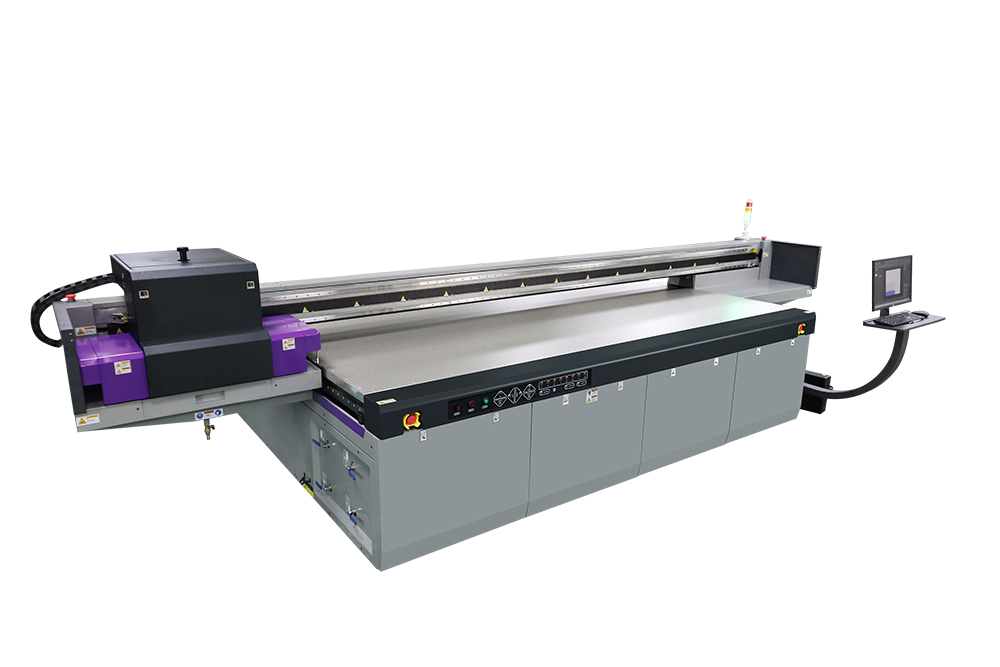UV Flatbed Printer: A Guide to Printing on Glass
UV Flatbed Printer: A Guide to Printing on Glass
In the world of printing technology, UV flatbed printers have emerged as a versatile and efficient tool for printing on various materials, including glass. Glass printing has become increasingly popular in recent years, finding applications in various industries such as advertising, interior design, and even fine art. This article serves as a comprehensive guide to printing on glass using a UV flatbed printer, covering everything from the basics of UV printing technology to the step-by-step process of printing on glass.

Understanding UV Flatbed Printers
UV flatbed printers utilize ultraviolet (UV) curing technology to instantly dry and set the ink on a wide range of materials. Unlike traditional printing methods that rely on heat or evaporation to dry the ink, UV printers use UV lights to cure the ink instantly, resulting in a more durable and long-lasting print.
The key benefits of UV flatbed printers include:
Versatility: Ability to print on various materials such as glass, metal, wood, plastic, and more.
Durability: UV-cured inks are highly resistant to fading, scratching, and water damage.
Efficiency: Instant drying allows for faster turnaround times and reduces the risk of damage during handling.
Printing on Glass: Step-by-Step Guide
Printing on glass using a UV flatbed printer involves several steps, from preparing the glass surface to finalizing the print. Here’s a detailed guide:
Step 1: Prepare the Glass Surface
Ensure the glass surface is clean and dust-free. Use a glass cleaner and lint-free cloth to remove any dirt or fingerprints.
If the glass has a protective film or coating, remove it before printing.
Step 2: Design Preparation
Create or obtain the desired design in a high-resolution format (preferably vector-based for scalability).
Adjust the design to fit the size and shape of the glass surface.
Convert the design to the appropriate color mode (typically CMYK) and resolution for printing.
Step 3: Pre-press Settings
Load the design into the UV flatbed printer’s software.
Adjust the print settings, including resolution, ink density, and print speed, according to the glass type and desired output quality.
Ensure that the UV curing unit is properly aligned and functional.
Step 4: Printing Process
Place the cleaned glass onto the flatbed of the printer, securing it firmly to prevent movement during printing.
Initiate the printing process. The printer will lay down the ink onto the glass surface layer by layer.
After each layer of ink is applied, the UV curing unit will activate, instantly drying and setting the ink.
Step 5: Post-printing
Allow the printed glass to cool down completely before handling.
Inspect the print for any defects or inconsistencies.
If necessary, apply a finishing coat or laminate to enhance durability and protection.
Applications of Glass Printing
Glass printing with UV flatbed printers finds applications in various industries:
Advertising: Custom printed glass signs, displays, and promotional materials.
Interior Design: Decorative glass panels, windows, and partitions.
Fine Art: Unique artistic creations on glass substrates.
Packaging: Custom printed glass bottles and containers for cosmetics, perfumes, and more.
Choosing the Right UV Flatbed Printer
When selecting a UV flatbed printer for glass printing, consider the following factors:
Print Resolution: Higher resolution printers produce finer details and sharper images.
Ink Type: Choose a printer that supports UV-curable inks for durability and longevity.
Print Size: Ensure the printer can accommodate the desired size of glass substrates.
Versatility: Look for a printer that can handle multiple materials besides glass.
Ease of Use: User-friendly software and interfaces simplify the printing process.
Conclusion
UV flatbed printers offer an efficient and versatile solution for printing on glass. With the right printer and proper techniques, you can create stunning visual displays, signs, and artistic creations on glass substrates. From advertising to interior design, the possibilities are endless with UV glass printing. As technology continues to advance, we can expect even more innovative applications in the future.
